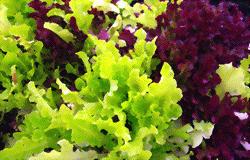 A research team from Portugal has published an international journal called ‘Food Control' - a work on the influence of working conditions and practices of food operators on physico-chemical and microbiological quality of fresh-cut lettuce salads produced in a catering unit.
A research team from Portugal has published an international journal called ‘Food Control' - a work on the influence of working conditions and practices of food operators on physico-chemical and microbiological quality of fresh-cut lettuce salads produced in a catering unit.During the research, 21 visits were performed checking all steps from produce reception to the whole fresh-cut processing of lettuce. Even if the catering unit followed a HACCP plan, some non-conformities were detected on personal hygiene practices of the operators that should be corrected.
As regards the fresh-cut lettuce processing, 2 sanitizing treatments were used, such as diluted solutions with acetic acid and chlorine-based tabs. However, the former treatment with acetic acid should not be used because it does not guarantee the safety of the final product; while for the latter treatment, it is fundamental to strictly follow recommendations given by chlorine-based tabs supplier. In addition, free chlorine and chloroamines were not detected in the final product.
The authors concluded that this work has allowed to define several practical and operational recommendations to improve the efficacy of both washing and the following sanitizing steps during fresh-cut lettuce preparation.
Source: Pereira E.L., Rodrigues A., Ramalhosa E., ‘Influence of working conditions and practices on fresh-cut lettuce salads quality’, Food Control, 2013, Issue No. 33(2):406-412. http://www.sciencedirect.com/science/article/pii/S0956713513001436








